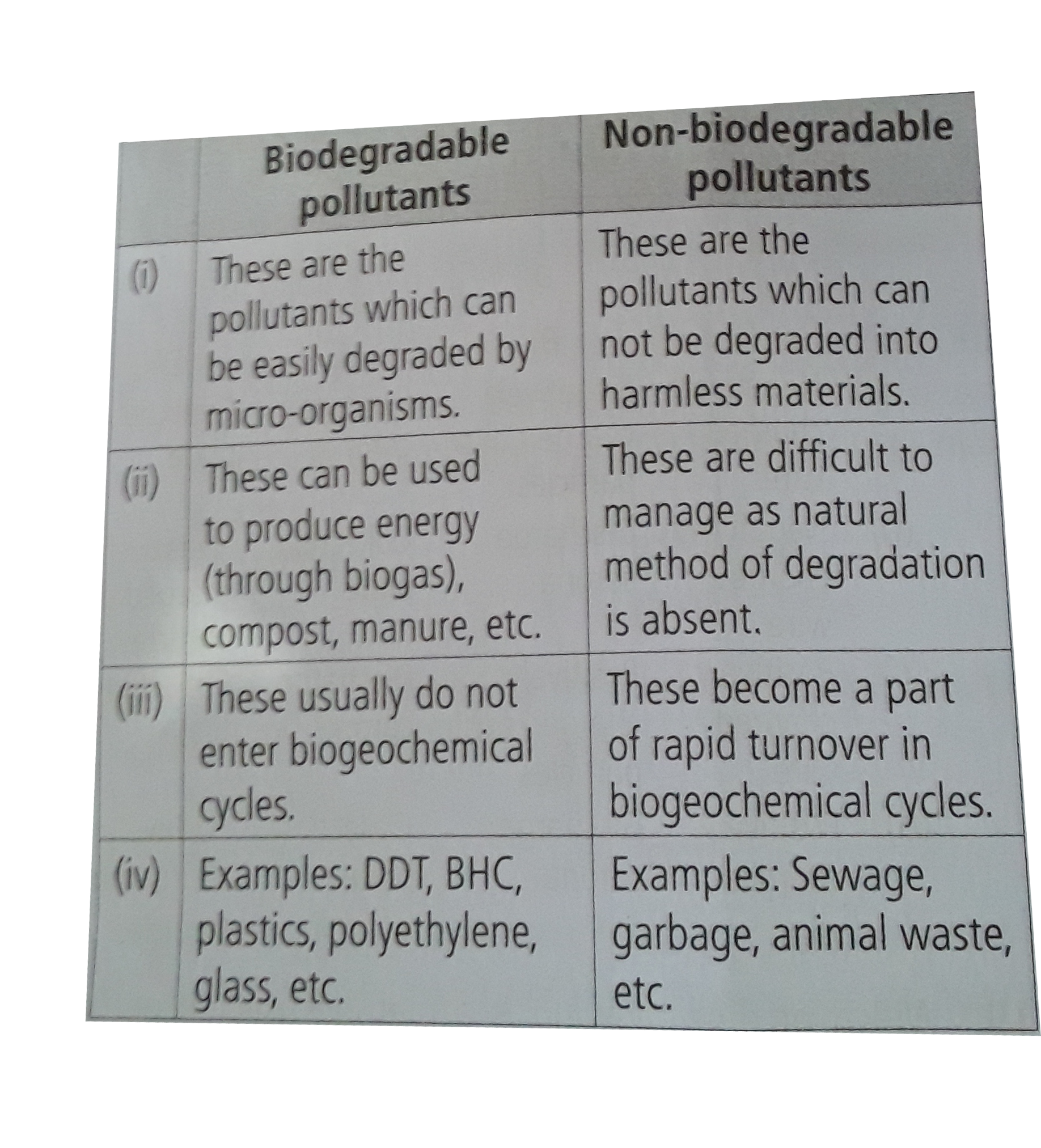Non-biodegradable pollutants are created by
nature
excessive use of resources
humans
natural disasters.
The correct Answer is:C
Step-by-Step Solution:
1. Understanding Non-Biodegradable Pollutants:
- Non-biodegradable pollutants are substances that do not decompose or break down into smaller, harmless materials over time. This means they persist in the environment for a long duration.
2. Identification of Sources:
- These pollutants are primarily created by human activities. This includes industrial processes, agricultural practices, and everyday consumer habits.
3. Examples of Non-Biodegradable Pollutants:
- Some common examples of non-biodegradable pollutants include:
- DDT (Dichloro-Diphenyl-Trichloroethane) - a pesticide that is harmful to the environment.
- BHC (Benzene Hexachloride) - another pesticide that does not break down easily.
- Polythene (Plastic) - widely used in packaging and other products, which takes hundreds of years to decompose.
4. Conclusion:
- In summary, non-biodegradable pollutants are created by human activities and include substances like DDT, BHC, and polythene.
---
- Non-biodegradable pollutants are substances that do not decompose or break down into smaller, harmless materials over time. This means they persist in the environment for a long duration.
- These pollutants are primarily created by human activities. This includes industrial processes, agricultural practices, and everyday consumer habits.
- Some common examples of non-biodegradable pollutants include:
- DDT (Dichloro-Diphenyl-Trichloroethane) - a pesticide that is harmful to the environment.
- BHC (Benzene Hexachloride) - another pesticide that does not break down easily.
- Polythene (Plastic) - widely used in packaging and other products, which takes hundreds of years to decompose.
- In summary, non-biodegradable pollutants are created by human activities and include substances like DDT, BHC, and polythene.
Topper's Solved these Questions
Similar Questions
Knowledge Check
- Question 1 - Select One
Which of the following is a non-biodegradable pollutant ?
ADDTBSewageCPlant leavesDDomestic wastes - Question 2 - Select One
The following table summarises the differences between biodegradable and non-biodegradable pollutants. Pick out the wrong diggerences and select the correct answer.
 A(i) and (iv)B(ii) and (iv)C(iii) and (iv)D(ii), (iii) and (iv)
A(i) and (iv)B(ii) and (iv)C(iii) and (iv)D(ii), (iii) and (iv) - Question 3 - Select One
Given below are four statements each with two blanks. Select the option which correctly fills up the blank in any two statements.
(i) Bhopal gas disaster took place on ___ 1994 and this day is now observed as the ____ day in India to make the anniversary of the Bhopal gas disaster.
(ii) ____ is a biodergradable pollutant while ___ is a non-biodegradable pollutant while ____ is a non-biodegradable pollutant.
(iii) When pollutants are released from a single point it is called ____ pollution, but when it is over a large area, then it is called ____ pollution.
(iv) _____ is the world's most problematic aquatic weed, introduced in India for its lovely flowers, also called as ____.A(i) December 5, National pollution prevention (iv) Parthenium, terror of BengalB(i) December 2, Bhopal gas tragedy (ii) DDT, sewageC(ii) Sewage, DDT (iii) point source, non-point sourceD(iii) line source, fixed source (iv) Eichhornia, tiger of Bengal
Polythene is a non- biodegradable pollutant .
View SolutionIs DDT a biodegradable pollutant ?
View SolutionSort out non-biodegradable and biodegradable pollutants among the following : Mercury salts, sewage, plant leaves, BHC, cadmium salts.
View SolutionRead the following statements carefully.
(i) An electrostatic precipitator removes particulate matter by imposing negative charge on them.
(ii) Catalytic converters convert unburnt hydrocarbons into CO2 and water.
(iii) Peroxyacyl nitrates (PAN) is a secondary pollutant.
(iv) DDT is a non-biodegradable pollutant.
Which of the above statements are incorrect ?View SolutionWhich of the following are true ?
I. Benzene hexachloride is a non- biodegradable pollutants .
II. Anthropogenic air pollutants are natural in origin .
III. Carbon monoxide is a primary air pollutant .
IV. Sulphur dioxide cause brown air effect during traffic congestion in cities.View Solution

